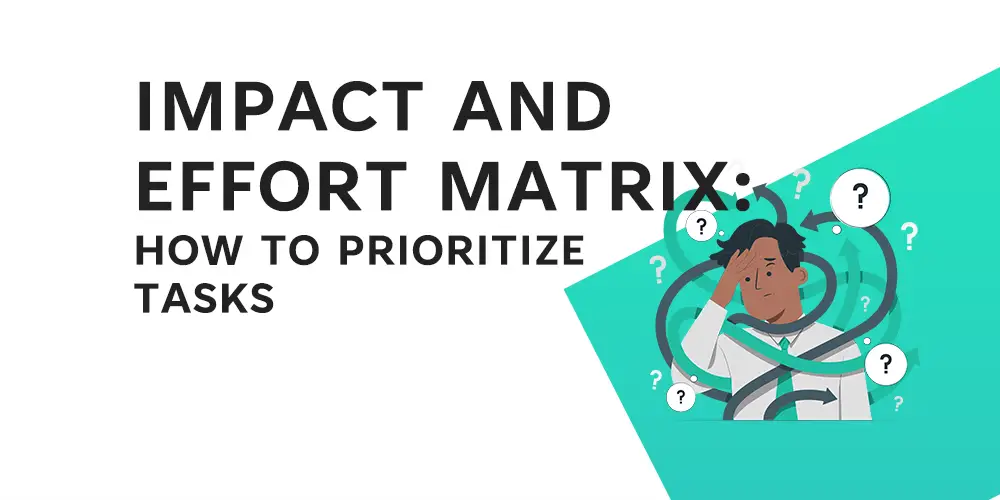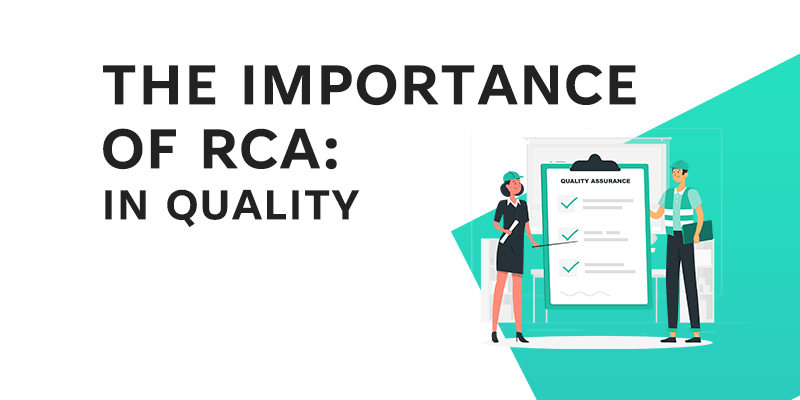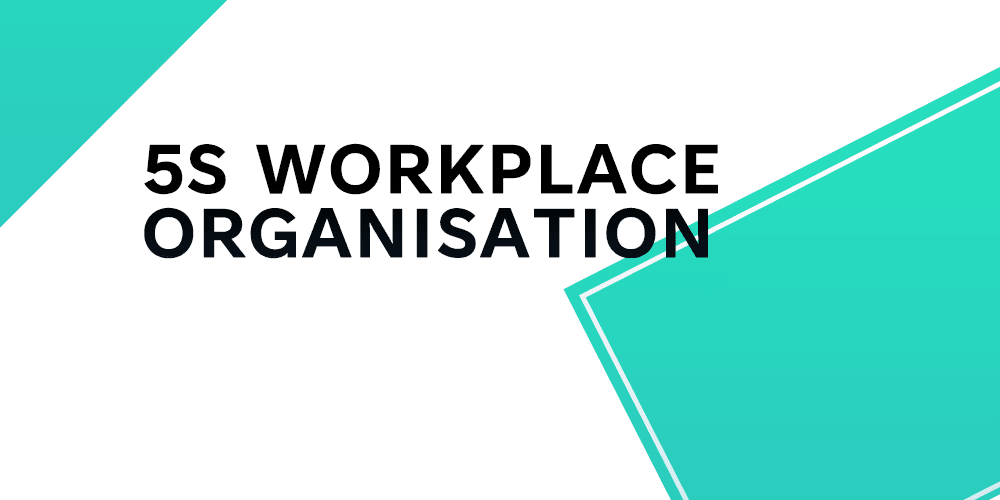Are you fed up with being overwhelmed by your to-do list? Do you have trouble deciding which tasks to tackle first, or do you procrastinate on important projects? Prioritizing tasks is an essential skill for success in both your personal and professional life. It enables you to concentrate your efforts on the most important and impactful activities while avoiding burnout and overwhelm.
The Impact and Effort Matrix is a useful tool for prioritising tasks. This straightforward but effective framework can assist you in making informed decisions about how to allocate your time and resources. You can quickly identify the high-priority activities that will have the greatest return on investment by evaluating each task based on its potential impact and required effort.
In this blog post, we’ll go over the basics of the Impact and Effort Matrix and show you how to use it to prioritise your own tasks. The Impact and Effort Matrix can help you achieve your goals more efficiently and effectively, whether you’re a busy professional, a student juggling multiple assignments, or simply someone looking to optimise your productivity. Let’s get started!
Looking for an Impact and Effort Matrix Template? Click here
Understand the Impact and Effort Matrix
The Four Quadrants
The Impact and Effort Matrix is a two-dimensional tool for categorising tasks according to their level of impact and effort required. It is divided into four quadrants:
Quick Wins: This quadrant contains tasks that are simple to complete but have a significant impact. These are the tasks you should prioritise first because they can provide immediate results and motivate you to tackle more difficult tasks.
Major Projects: Tasks in this quadrant have a high impact but require a significant amount of effort. These are important tasks to complete, but they may take longer and require more planning.
Fill-Ins: This quadrant contains tasks that are simple to complete but have little impact. These tasks can be completed quickly, but they will have little impact on your goals.
- Thankless Tasks: Tasks in this quadrant have a low impact but require a significant amount of effort. These are low-priority tasks that should be avoided or delegated if at all possible.

How to Assign Tasks
To assign tasks to each quadrant, you must first assess each task’s level of impact and effort. Each task can be rated on a scale of 1 to 5. Consider the potential outcomes of completing the task, such as increased revenue, improved efficiency, or increased customer satisfaction, when determining impact. Consider the time, resources, and skills required to complete the task when calculating effort.
After you’ve rated each task, plot it on the Impact and Effort Matrix. To represent effort, use the horizontal axis, with high effort on the right and low effort on the left. To represent impact, use the vertical axis, with high impact at the top and low impact at the bottom. Quick Wins tasks have a high impact but require little effort, whereas Major Projects tasks have a high impact but require a lot of effort. Fill-Ins are tasks with low impact and low effort, whereas Time Wasters are tasks with low impact and high effort.

How to Measure Impact and Effort
Measuring impact and effort can be difficult because it requires making subjective judgements about the worth of each task. There are, however, a few strategies you can employ to make this process more objective:
- Use metrics: If possible, quantify the impact of each task using data or metrics. You could, for example, count the number of customers who will benefit from a new feature or the amount of time and money saved by implementing a new process.
- Obtain feedback from others: Inquire with colleagues, mentors, or customers about the impact of a specific task. They might be able to offer insights you hadn’t considered.
- Break down tasks into smaller parts: If a task appears to be overwhelming, try breaking it down into smaller, more manageable parts. This can make evaluating the effort required for each part and seeing the potential impact of completing each part easier.
You can begin to prioritise your tasks more effectively and achieve your goals more efficiently by understanding the four quadrants of the Impact and Effort Matrix, assigning tasks to each quadrant based on their impact and effort, and measuring impact and effort as objectively as possible.
Steps for Prioritizing Tasks with the Impact and Effort Matrix
Step 1: List all the Tasks
The first step in using the Impact and Effort Matrix is to make a detailed list of all the tasks that must be completed, including both work-related and personal tasks. This enables you to prioritise all tasks based on their level of impact and effort, whether they are work-related or personal in nature. By taking this step, you can ensure that you are devoting your time and energy to the tasks that will have the greatest impact on your overall success and well-being, and you will be able to create a balanced plan for managing your time and achieving your goals.
Step 2: Determine the Level fo Impact and Effort for Each Task
Once you’ve compiled a comprehensive list of tasks, the next step is to assess the level of impact and effort required for each one. As previously stated, impact is the potential outcomes of completing the task, whereas effort is the time, resources, and skills required to complete the task. You can rate each task’s impact and effort on a scale of 1-5.
Step 3: Plot Each Task on the Matrix
You can plot each task on the Impact and Effort Matrix after rating it for impact and effort. To represent effort, use the horizontal axis, with high effort on the right and low effort on the left. To represent impact, use the vertical axis, with high impact at the top and low impact at the bottom.
Step 4:Review the Matrix and Prioritize Tasks
After you’ve plotted all of the tasks on the matrix, go over it to see which ones fall into which quadrant. Priority should be given to tasks in the Quick Wins quadrant (high impact, low effort), followed by tasks in the Major Projects quadrant (high impact, high effort). When you have some free time, do the Fill-Ins quadrant (low impact, low effort), and avoid or delegate the Time Wasters quadrant (low impact, high effort).
Step5: Create and Action Plan
Finally, make a plan of action for completing the tasks in each quadrant. You might be able to complete the tasks in the Quick Wins quadrant in a day or two. You may need to break each task down into smaller, more manageable parts for the Major Projects quadrant, and set deadlines for completing each part. You can add these tasks to your to-do list for the Fill-Ins quadrant when you have extra time. In the Time Wasters quadrant, you should either delegate or find ways to eliminate these tasks from your workload.
By following these steps, you can more effectively and efficiently prioritise your tasks and focus your energy on high-impact activities that will bring you closer to your goals.
Tips for Using the Impact and Effort Matrix Effectively
The Impact and Effort Matrix is a simple and effective tool for prioritizing tasks, but to get the most out of it, there are some tips you should keep in mind. Here are four tips to help you use the Impact and Effort Matrix effectively:
Be Realistic with Impact and Effort Measurements
It is critical to be as realistic and honest as possible when assigning impact and effort measurements to each task. If you overestimate the importance of a task or underestimate the amount of effort required, you may end up prioritising tasks that are not the most important or feasible. So, give each task careful thought and make accurate assessments of its impact and effort level.
Focus on High-Impact, Low-Effort Tasks
One of the most important advantages of the Impact and Effort Matrix is that it assists you in identifying tasks that have a high level of impact but require little effort. These are the tasks you should prioritise first because they will have the most impact on your success and well-being while requiring the least amount of time and energy. You can make the most of your limited time and resources by focusing on these tasks.
Consider the Urgency of Each Task
While impact and effort are important considerations in task prioritisation, they are not the only ones. You should also consider the importance of each task and whether it must be completed by a certain date. A task with a high impact but is not urgent may not be as important as a task with a lower impact but must be completed immediately. So, keep in mind the importance of each task, as well as its impact and level of effort.
Re-evaluate the Matrix Regularly
As your workload and priorities shift, it’s critical to re-evaluate the Impact and Effort Matrix on a regular basis. This ensures that you are prioritising tasks based on the most recent information and making the best use of your time and resources. Set aside time each week or month to review and update the matrix, as well as to make any necessary changes to your task list and priorities.
Finally, by following these guidelines, you can effectively use the Impact and Effort Matrix to prioritise your tasks and make the most of your time and resources. Remember to be realistic when measuring impact and effort, to prioritise high-impact, and low-effort tasks, to consider the urgency of each task, and to re-evaluate the matrix on a regular basis.
Conclusion
In conclusion, using the Impact and Effort Matrix to prioritise your tasks can be a highly effective strategy for managing your time and meeting your objectives. You can ensure that you are focusing your time and energy on the tasks that will have the greatest impact on your overall success and well-being by carefully evaluating each task and assigning it to the appropriate quadrant on the matrix.
You can create a balanced and effective plan for managing your workload and achieving your goals by following the steps outlined in this post and keeping in mind the tips for using the matrix effectively. So, start making the most of your time and resources right now by employing the Impact and Effort Matrix.








